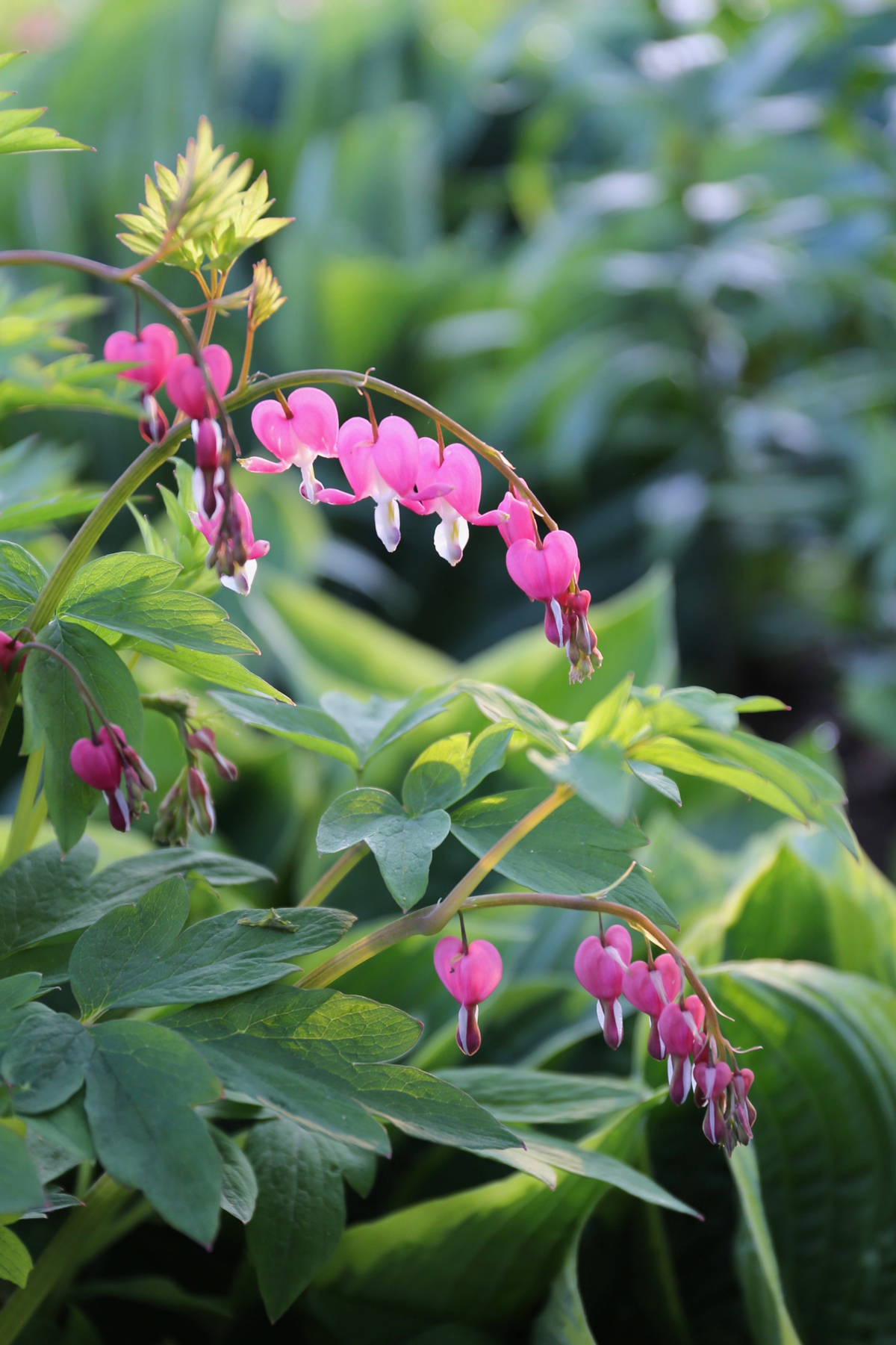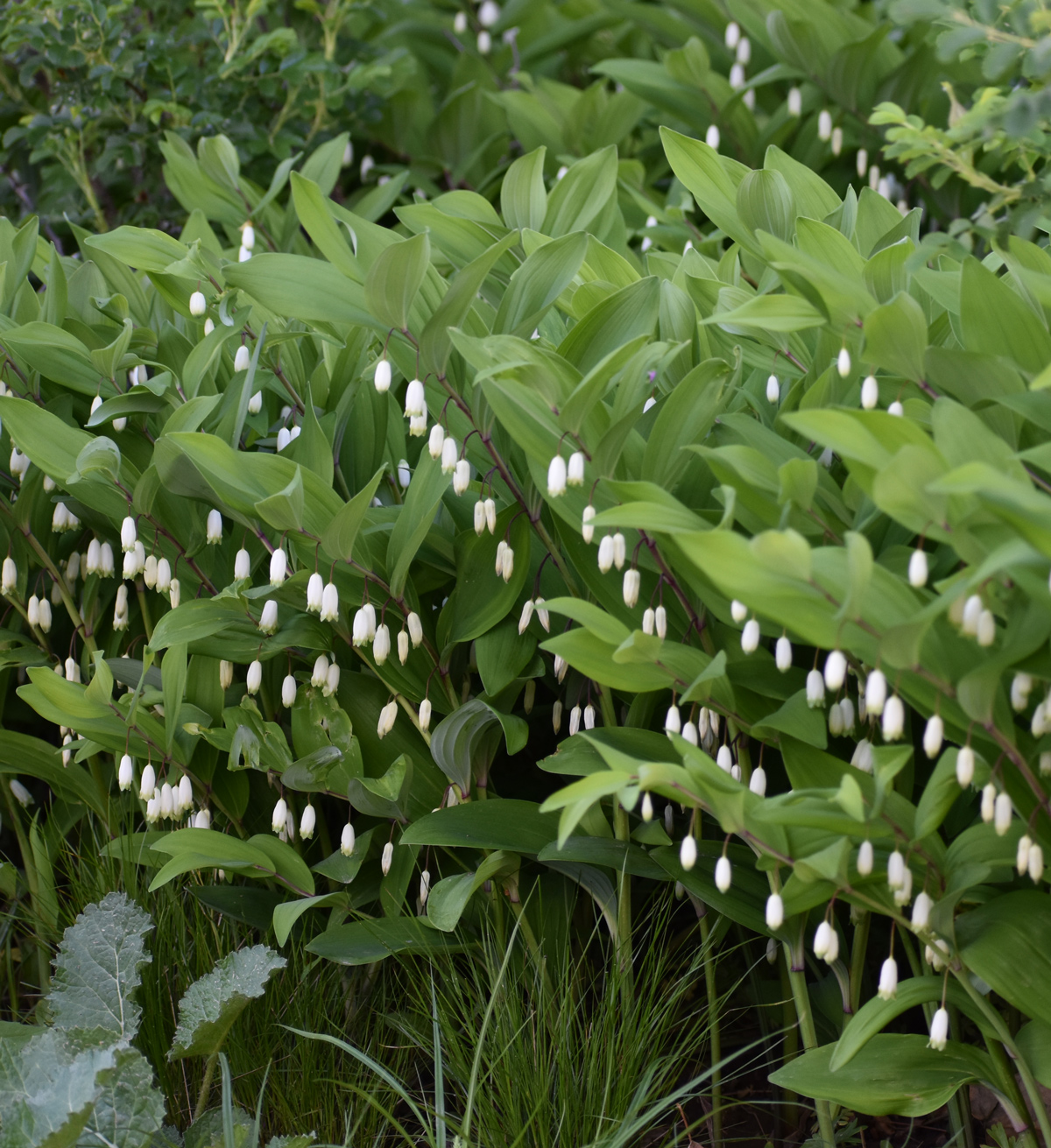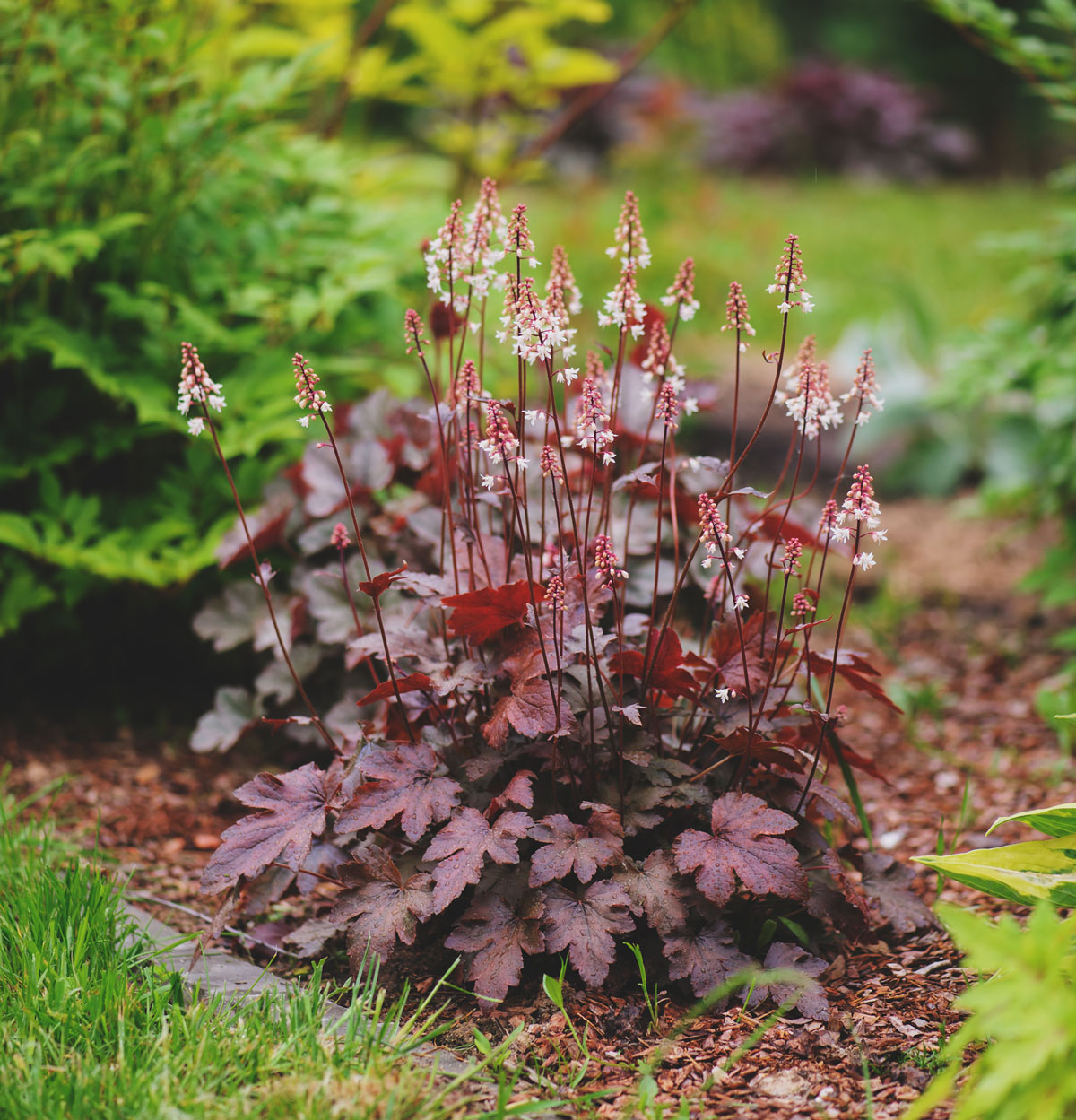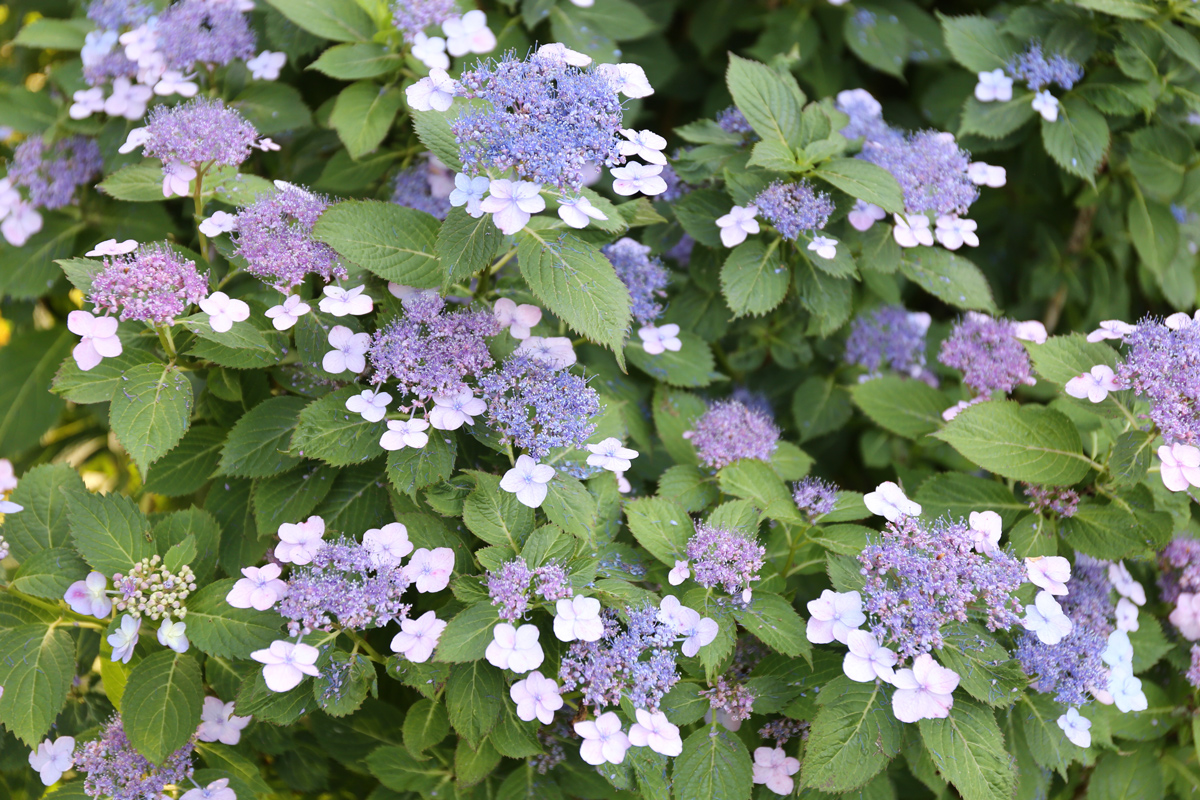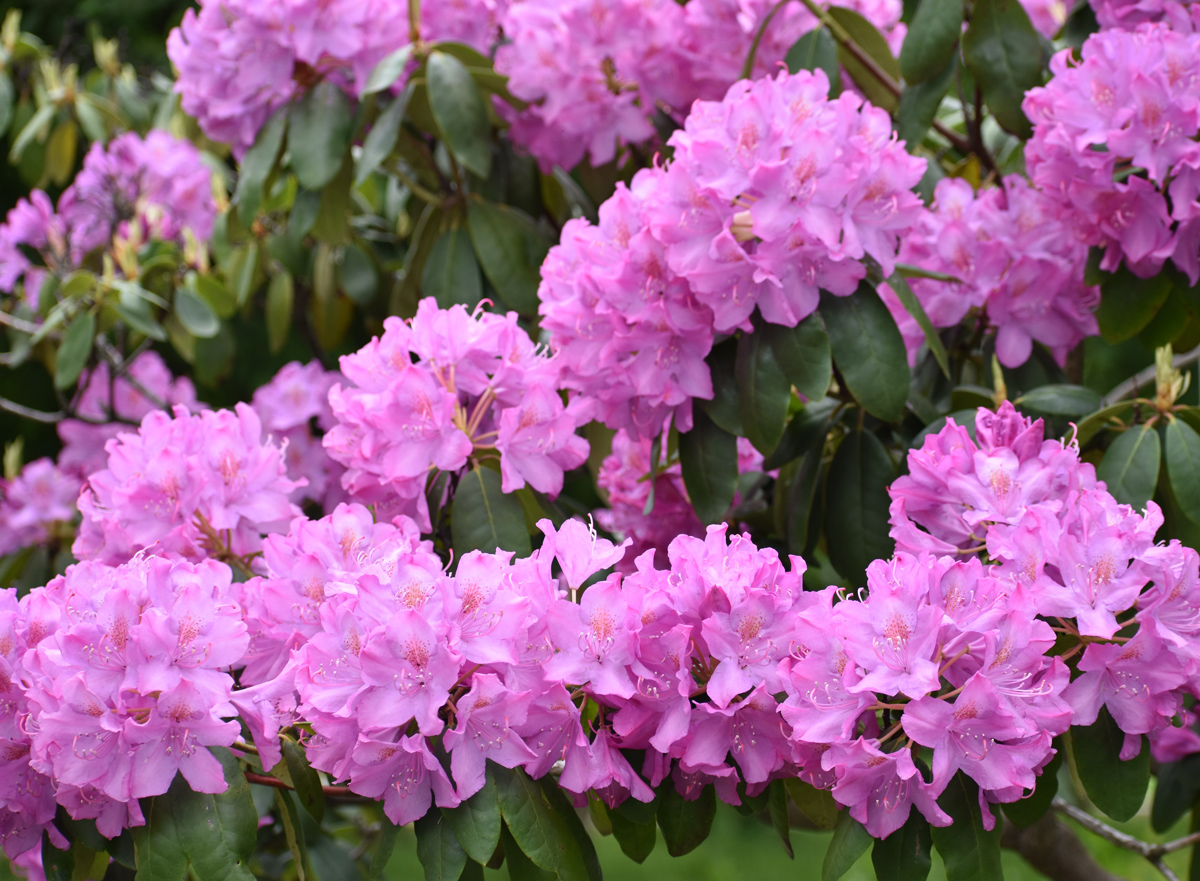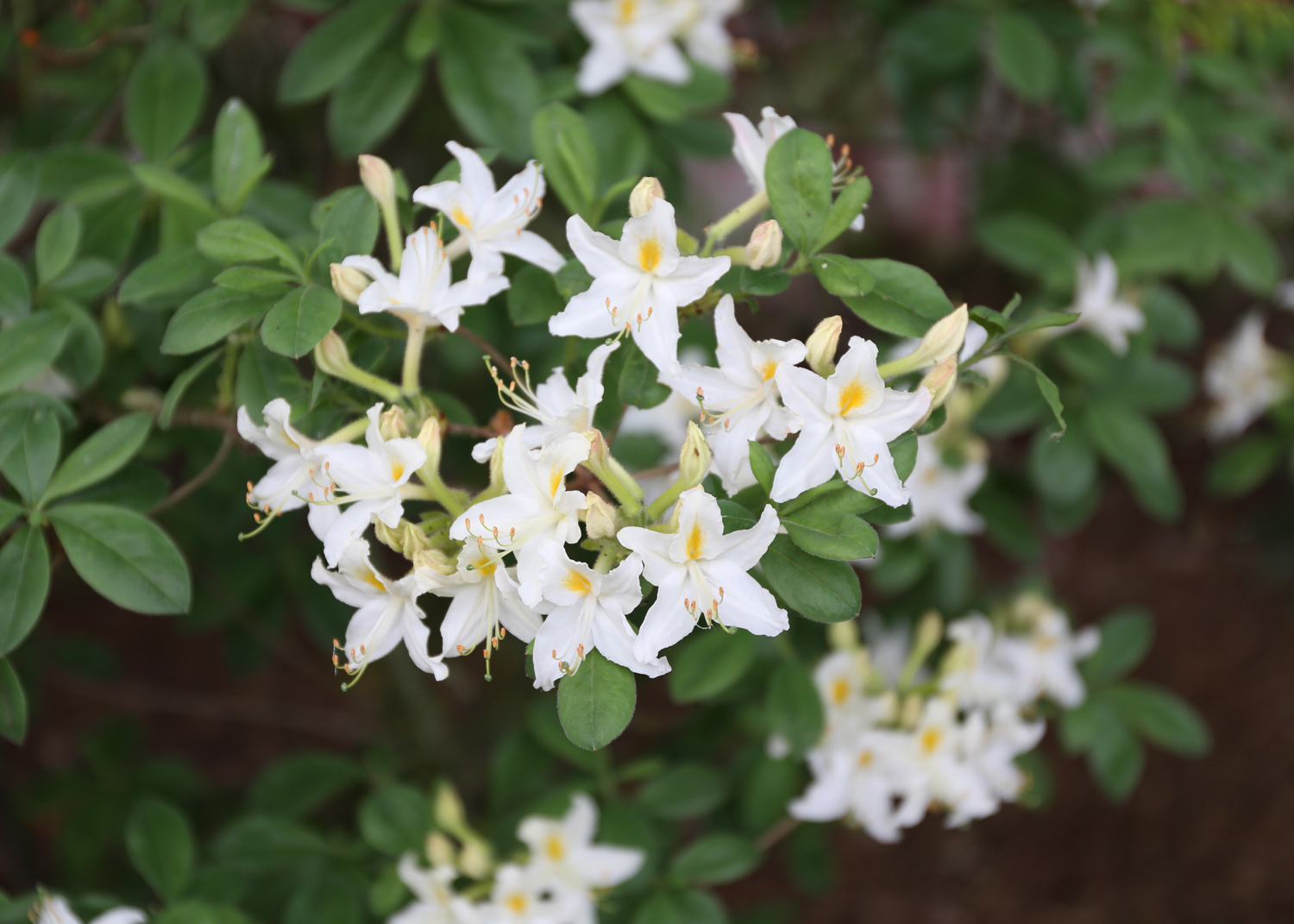Shade Tolerant Blooms for Garden and Vase
Do you want to grow cut flowers, but have a garden that’s too shady? You may have heard that cut flowers require full sun, and gardens in partial shade are only good for foliage plants. Not so! Though many cut flowers do need full sun, there are many shade-loving perennials and shrubs that make wonderful cut flowers. Read on to learn about 13 favorites!
Bleeding Heart (Lamprocapnos spectabilis or Dicentra spectabilis)
Who wouldn’t love a plant with dancing hearts for flowers? Bleeding Heart is a beautiful spring-blooming perennial with blossoms that can be pink, red, or white. In arrangements, it provides a lovely draping texture, and it pairs beautifully with late daffodils, tulips, peonies, and lilacs.
Bleeding heart is a spring ephemeral, which means after the plant blooms, it dies back to the ground. So don't be alarmed if by midsummer your bleeding heart is nowhere to be found. This is normal and you can expect the plant to return next spring. Harvest the flowers when 5 blossoms on a stem have opened. Learn more about growing dicentra HERE.
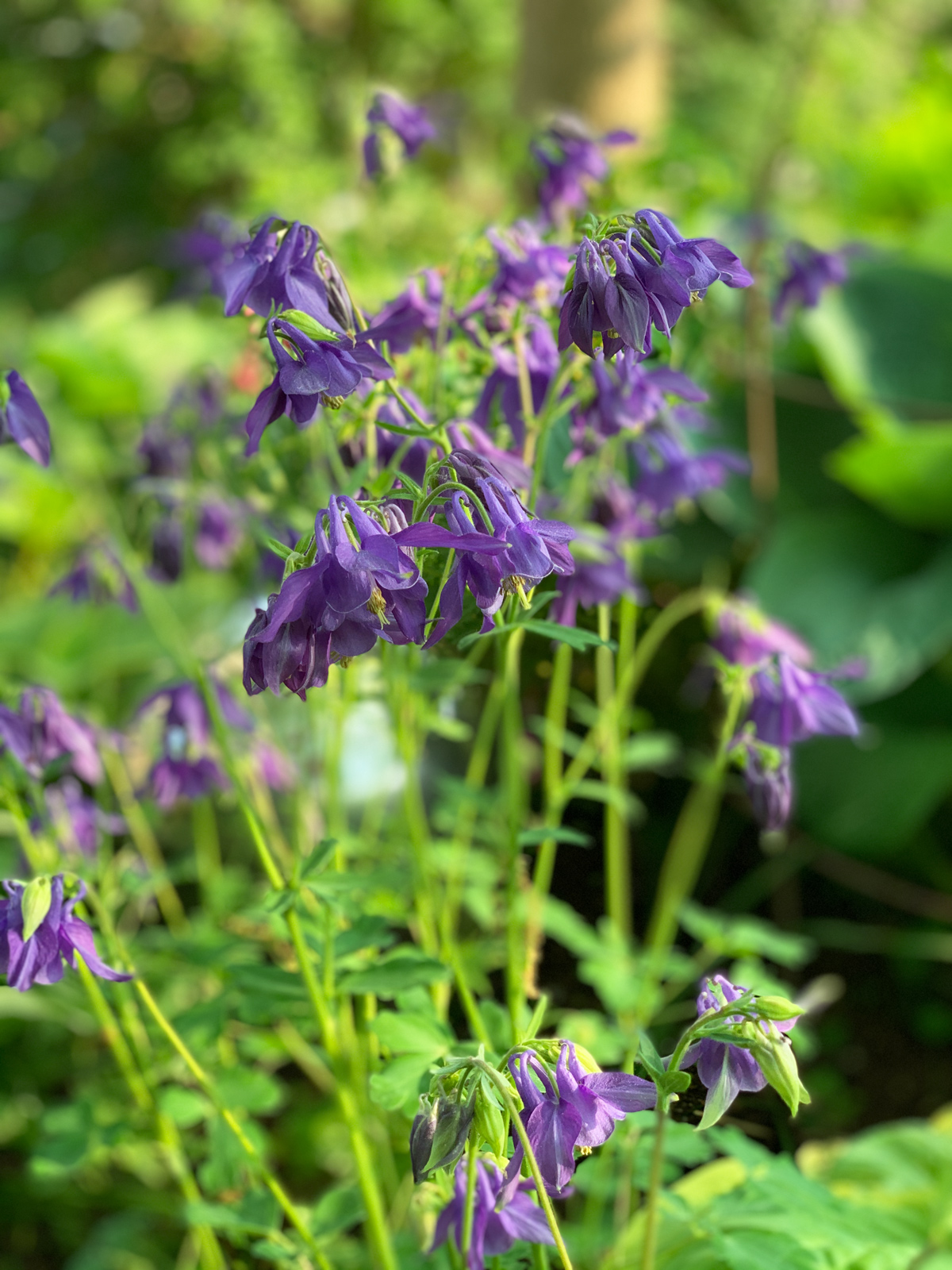
Columbine (Aquilegia)
The dainty flowers and delicate, fernlike leaves of columbine add old-world charm and whimsy to spring and early summer flower arrangements. This North American native comes in a wide range of colors and sizes. For cutting, look to the taller varieties such as the Barlow series. Columbine is easily grown from seed, so establishing a large bed of plants shouldn't cost more than a packet of seeds and some tender loving care. Harvest columbine when half of the flowers on a stem have opened and it will give you a vase life of approximately 6 days.
Columbines are short-lived perennials and will often self-sow. If you don’t want seedlings, cut off the stems after the flowers fade. This will also keep the plants looking neater. If the foliage starts to yellow and look tattered, you can cut it back to the ground. Though the plants will probably not bloom again until the next year, they will usually produce a fresh flush of foliage.

Hellebore (Helleborus orientalis)
Commonly known as Lenten rose, these shade-loving perennials are among the earliest plants to bloom in the garden. The flowers can be double or single, and come in lovely, muted shades of eggplant, mauve, ivory, green, and rose, and often feature speckles or streaks. Hellebores are gorgeous in flower arrangements, though they are prone to wilting. To ensure a long vase life, wait to pick the flowers until after the stamens have dropped and the seedpods are developing.
Hellebores are attractive plants with mounding, evergreen foliage. The plants can be expensive to purchase because it takes several years for them to mature and start blooming. Though hellebores can be challenging to grow from seed, they self-seed readily. Once you have established plants, watch for volunteer seedlings, and nurture these babies along into valuable plants.
Astilbe
If you love the look of celosia and amaranth, but don't have full sun, then astilbe is the flower for you. Filling the important “spike” role in floral design, astilbe offers striking vertical interest, and the flowers come in a wonderful color palette of pinks, peaches, purples, whites, and reds. These plants also have very attractive foliage, which can be cut any time during the season and used as a filler in arrangements.
There are many astilbe cultivars to choose from. While some grow just a foot tall, others can reach 4-feet. Be sure to select a tall variety for cutting. A longer stem on any flower will always give you the most versatility in terms of arranging, and the longer the stem, the more valuable the cut flower. Harvest astilbe when the entire bloom stock is showing color and 3/4 of the flowers are open on the stem. To learn more about growing astilbe, read All About Astilbe.

Lady’s Mantle (Alchemilla mollis)
For a versatile perennial that thrives in full to part shade, it’s hard to beat lady’s mantle. And if you want a cut flower that can work in any design, with every color palette, then this is the plant for you. The sprays of glittering, chartreuse flowers are in bloom for at least a month in early summer. Lady’s mantle’s foliage is equally stunning. Water droplets look like jewels when they collect on the plant’s gray-green, scalloped-edged leaves. Harvest the blooms when 3/4 of the flowers on a stem are open, and you can expect a vase life of 7-10 days.
Even if you are not interested in cut flowers, a drift of lady’s mantle is a fine thing to have in your garden. The plants live for many years and are not bothered by pests or disease.

Japanese Anemone (Anemone hupehensis var. japonica)
Japanese anemones are fall blooming perennials with satiny, sophisticated blooms in lovely colors that include white, pink and purple. The flowers have long, wiry stems that sway peacefully in the breeze and they add an airy look to flower arrangements. Japanese anemones have a long bloom season that can last 6 to 8 weeks. To use these as cut flowers, harvest when one-quarter of the flowers on a stem are open, and before the pollen has started to shed. As older blooms fade, new blooms will gradually open.
The plants are a bit late to emerge in the spring, so they are an ideal groundcover for the dying foliage of spring bulbs. They grow best in light to medium shade. Japanese anemones can spread quickly by underground roots, so give them a place where they have room to roam.
Solomon’s seal (Polygonatum biflorum or Polygonatum odoratum)
For arching greenery that's tough as nails, Solomon’s seal can’t be beaten. These plants are available with standard green foliage or variegated white and green foliage. In late spring, each arching stem is loaded with dangling white blooms that are reminiscent of lily of the valley. Harvest foliage at ground level in early spring before the flowers appear, or when a few blooms have opened on the stem.
Solomon’s seal is long-lived and easy to grow. The plants spread via underground rhizomes, so keep this in mind when deciding where to plant it.
Coral Bells (Heuchera sanguinea)
Heucheras are grown for their decorative foliage, which is in high demand by floral designers. There are dozens of cultivars to choose from, with foliage colors that include deep bronze, burnt ocher, marbled burgundy, acid yellow and lime green. During early summer, the plants produce clusters of tiny bells on tall, wiry stems. These are long-lasting cut flowers. To use heuchera foliage in arrangements, cut the stems at ground level. For blooms, cut when half the florets on a stem are open. Learn more about growing heuchera HERE.
Bigleaf Hydrangea (Hydrangea macrophylla)
Also known as mop head or macrophylla hydrangeas, these lovely shrubs can provide you with armloads of big, blousy flowers in the color every gardener desires: true blue. For the longest vase life, be sure to harvest bigleaf hydrangeas early in the morning when the plant is well hydrated. Cut only when the blooms are fully colored and mature. Remove most of the foliage and make an angled cut to the stem, then cut vertically up and immediately place in deep water to condition for 12-24 hours. After conditioning, recut the stem and arrange as desired. (For an in-depth video on how to condition hydrangeas, click HERE.
There are many different hydrangea cultivars to choose from. Heights range from 1 to 5 feet tall and wide, so you can choose the size that’s right for your yard. With most, you can change the flower color from pink to blue by adjusting your soil pH from alkaline to acidic.
Oakleaf Hydrangea (Hydrangea quercifolia)
These native hydrangeas offer beautiful ivory blooms, striking leaf structure, and vibrant fall color. For the longest vase life, cut oakleaf hydrangea flowers after they have begun to turn from white to their antique green/pink color. If you cut the flowers sooner (in the ivory stage), they will hold for a short period of time, but may wilt after a day or two.
These shrubs can grow up to 8 feet tall, so be sure you give them plenty of room. They bloom on old wood, so if you need to do any pruning, do it right after the plants flower. If left on the plant, the flower heads will persist through the winter. Alternatively, you can cut some and dry them to display indoors.
Rhododendron
Although underused in floral design, Rhododendrons are long lasting cut flowers that look wonderful en masse or when paired with spring perennials and bulbs. Harvest when half the flowers on a bloom head are open. Cut only the length of stem needed for an arrangement and then slice vertically up the stem a few inches to increase water uptake.
Rhododendrons are available in many sizes and flower colors. Since the plants are evergreen, these shrubs also have value in the winter landscape. They flourish in acidic soil (pH 4.5-6) that is rich in organic matter. The roots are relatively shallow, so spreading mulch around the base of the plant will help to keep the roots cool and moist.
Azalea
All azaleas are rhododendrons, but not all rhododendrons are azaleas. Confusing, right? Generally, rhododendrons are evergreen, and azaleas are semi-evergreen or deciduous. Azalea flowers are generally funnel shaped, while other rhododendrons have bell shaped blooms with thicker petals. As with rhododendrons, these shrubs have relatively shallow roots and prefer consistent moisture. There are many cultivars to choose and a wide range of sizes and flower colors.
Often referred to as “royalty of the garden,” azaleas pack a double punch because both flowers and foliage are valuable for cutting. Harvest the azalea for blooms when half the florets on a cluster are open, and for foliage, harvest when the leaves are leathery and firm.
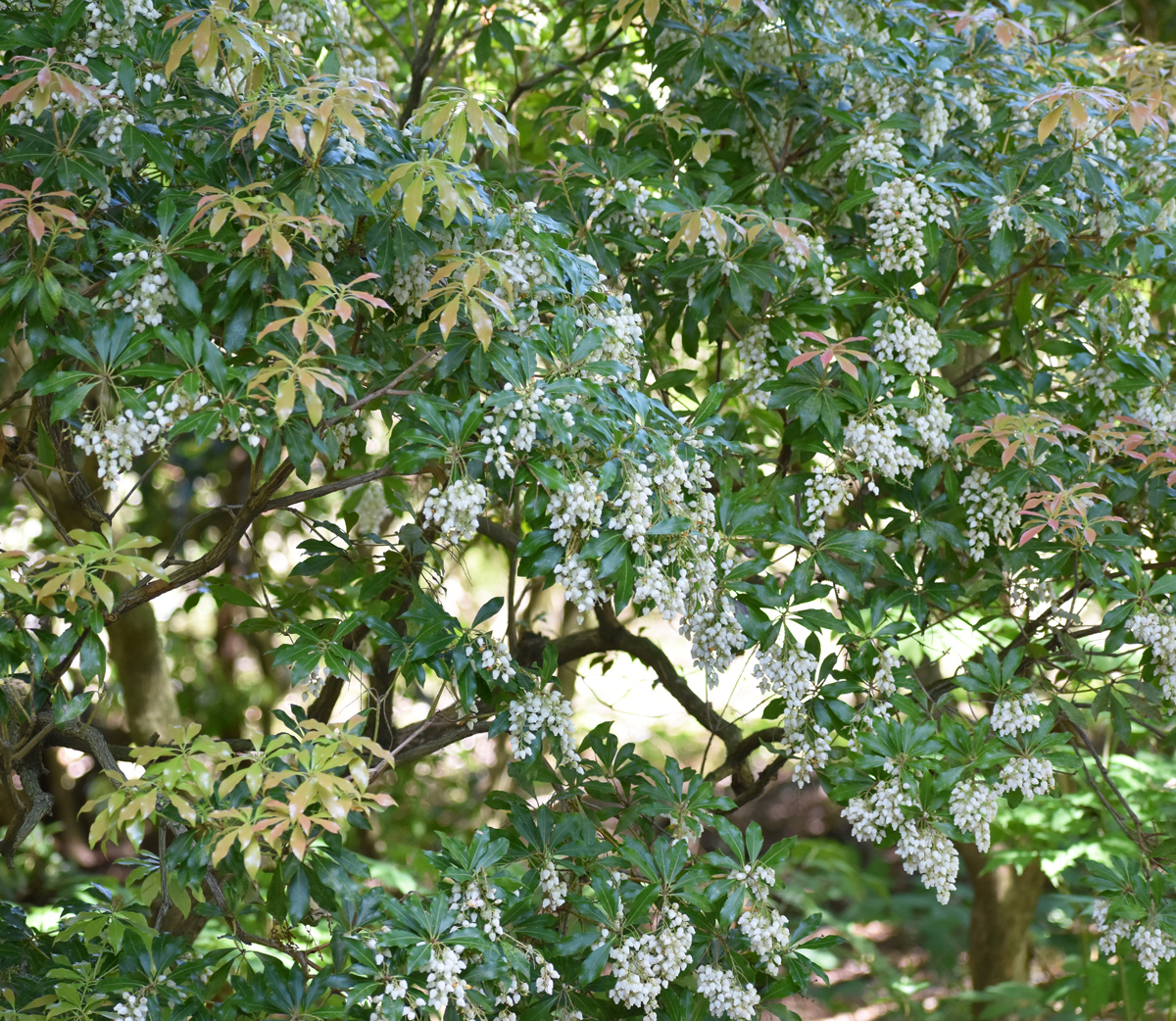
Japanese andromeda (Pieris japonica)
This slow-growing evergreen shrub can reach a mature height of 6 to 10 feet. It prefers moist, acidic soil that is high in organic matter. Long sprays of pink or white, jewel-like flowers cascade from the branches during late winter and early spring. Pieris japonica’s natural deer resistance makes it a winner in more ways than one.
The new foliage is also an attractive feature. It emerges bronze to bright red before settling into its mature deep green color. If left on the plant, the dried flowers will persist into winter. For cut flower arrangements, harvest the branches while the flowers are still in bud. To extend their vase life, slice vertically up the stem 2 inches, and allow the branches to condition in their original water in a cool dark place for at least 4 hours before arranging.
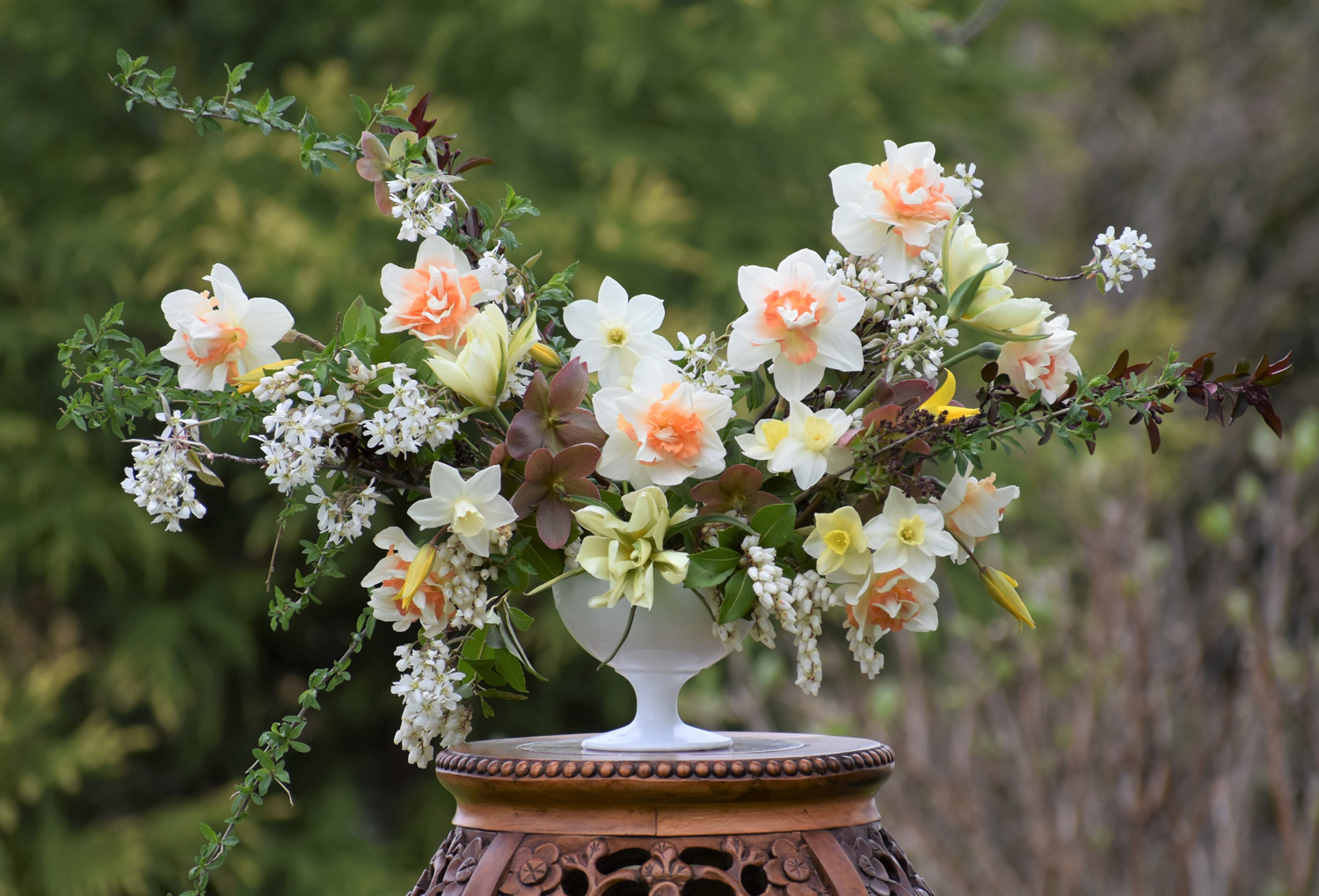
Even More Cut Flowers for Shady Gardens
Spring-blooming bulbs also perform beautifully in partial shade. Planting a mix of early, mid and late season bulbs, will give you a jump on the cut flower season and two months of colorful, carefree blooms. Good choices include tulips, daffodils, muscari, allium, fritillaria and leucojum.
Don’t let a shady garden discourage you from growing the buckets of blooms your heart desires. Rather, embrace it as an opportunity to create your own unique flower arrangements using plants that thrive in the soft, gentle light of shade. As the esteemed garden designer, Beth Chatto once said, “you just need to find the right plant for the right place.” Thankfully, there are plenty of shade loving plants that are as stunning in a vase as they are in the garden.
Learn more about gardening in the shade here: Design Tips for Shady Gardens, How to Design a Cutting Garden, Choosing Plants for Sun or Shade, and 10 Easy Perennials for Shady Gardens.

